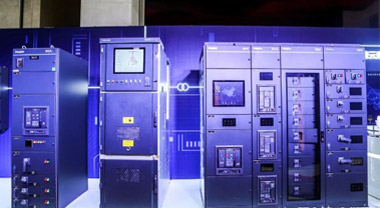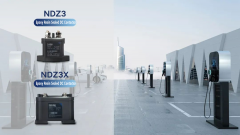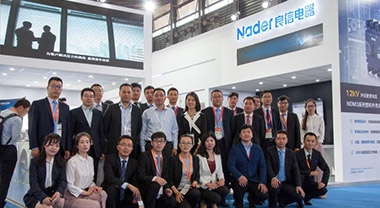How are circuit breakers made - Nader's automatic welding production line
By:Nader Updated:April 02,2021 16:32PM
Nader is a company focusing on the high-end market of low-voltage electrical appliances. With the brand positioning of high-end low-voltage electrical system solution experts, Nader is committed to people's more safe, convenient and efficient use of electric energy. Since its establishment in 1999, Nader has established a rich product line from the original miniature circuit breaker to now, covering the whole series of low-voltage electrical appliances. It provides low-voltage power distribution solutions for Huawei, Vanke, State Grid, Vertiv, Mitsubishi, Hitachi and other enterprises, and serves large-scale landmark projects such as Xitieshan photovoltaic power station, Qinghai Tibet railway project, bird's Nest National Stadium, Hong Kong-Zhuhai-Macao Bridge, Dubai International Airport, etc.
These achievements come from Nader's adherence to the concept of creating core value for customers and its strong R & D capability. At the R & D level, Nader's annual R & D expenses account for more than 6% of the sales revenue, and the enterprise laboratory can cover all the test projects of low-voltage electrical appliances. At the manufacturing level, the manufacturing workshop adopts the whole line imported from Europe, and the process equipment is leading in Asia. It takes only 1.5 seconds to produce a product. The three workshops of power distribution, terminal and industrial control are equipped with 26 automatic detection lines.
Do you know what manufacturing processes are required for a circuit breaker at factory? The production of circuit breakers includes six major working procedures: welding, assembly, inspection, electronics, OTS, and tooling. Today we are going to learn about the welding technology of products in Nader manufacturing line.
Automation capability
Nader's spot welding workshop adopts fully automatic welding production line, which can fully produce key products and key components, reduce welding defects caused by human factors, and improve product consistency and production efficiency. Among them, the automation ability is mainly reflected in the following three points:
1. All the contacts of mass production products are produced by automatic welding to ensure the welding quality of the contacts.
2. All the flexible connections are produced by automatic molding, including 0.75 square to 30 square, from 1 to 6, with beautiful molding, good consistency and rapid production.
3. The key contact system adopts full-automatic production, which can connect 5-8 solder joints automatically, realize assembly line production, reduce intermediate turnover links, and improve quality and efficiency.
Key technology
In the welding process, Nader has a number of key technologies, such as front and back identification of miniature circuit breaker contact, contactor/air circuit breaker induction welding, precision welding, primary welding of bus bar, laser welding, furnace brazing, etc.
Miniature circuit breaker contact automatic welding equipment introduces dynamic and static dual identification system, which effectively solves the problems of high proportion of return point and high cost of manual sorting caused by single dynamic identification system. The return point rate is less than 1 / 100000, which greatly reduces the risk of return point and reaches the industry leading level.
The induction welding process is introduced into the welding process of contactor and air circuit breaker contact to solve the instability of traditional graphite resistance brazing process. The infrared temperature control technology is used to accurately control the welding parameters to ensure the welding quality. The inductive welding process has little damage to the contact, good welding consistency, and greatly improves the stability and service life of the product contact.
Detection capability
Detection ability focuses on leak detection and ensure product quality. Welding workshop through the key dimension inspection, firmness tensile / shear force test, ultrasonic nondestructive testing, metallographic testing and other test methods, fully covering the identification elements of solder joints, through the first inspection, patrol inspection, factory inspection and other control means, strictly monitoring the quality risk of each period.
Through the key dimension inspection tooling, the key control process is put into full-scale inspection, so as to ensure that the product can be easily assembled after welding, and realize the size standardization of welding parts. In addition, the key parts of the welding, through the weld metallographic inspection, perspective welding truth, find defects, feedback the most real welding quality, to ensure the reliability and stability of the product.




